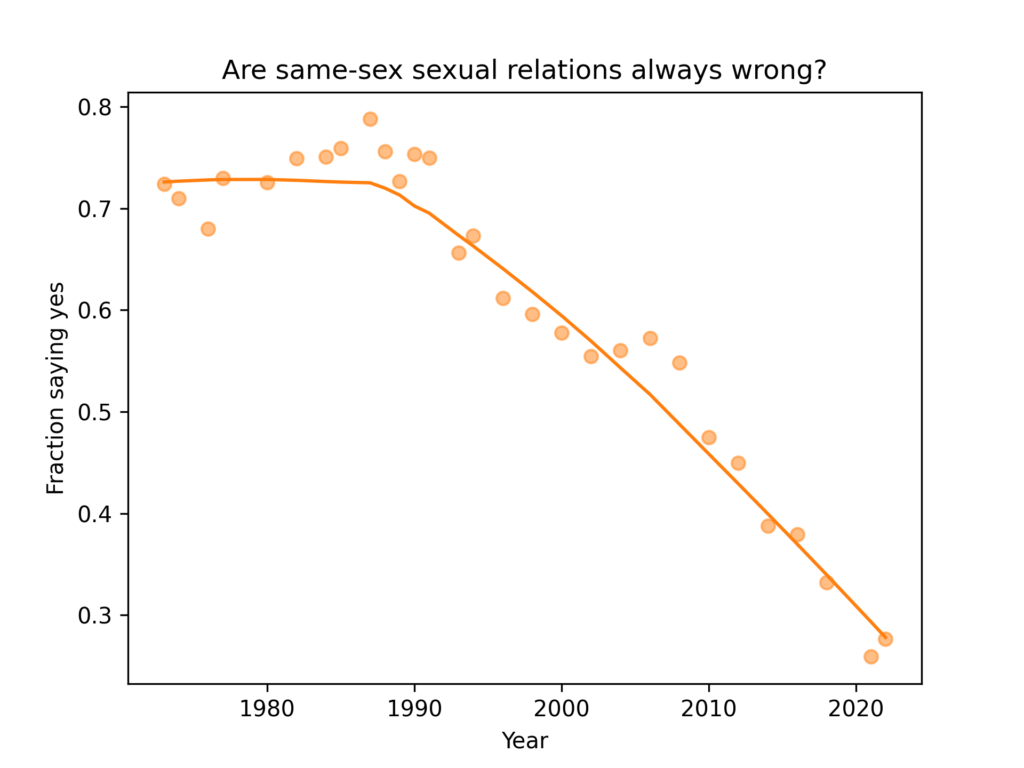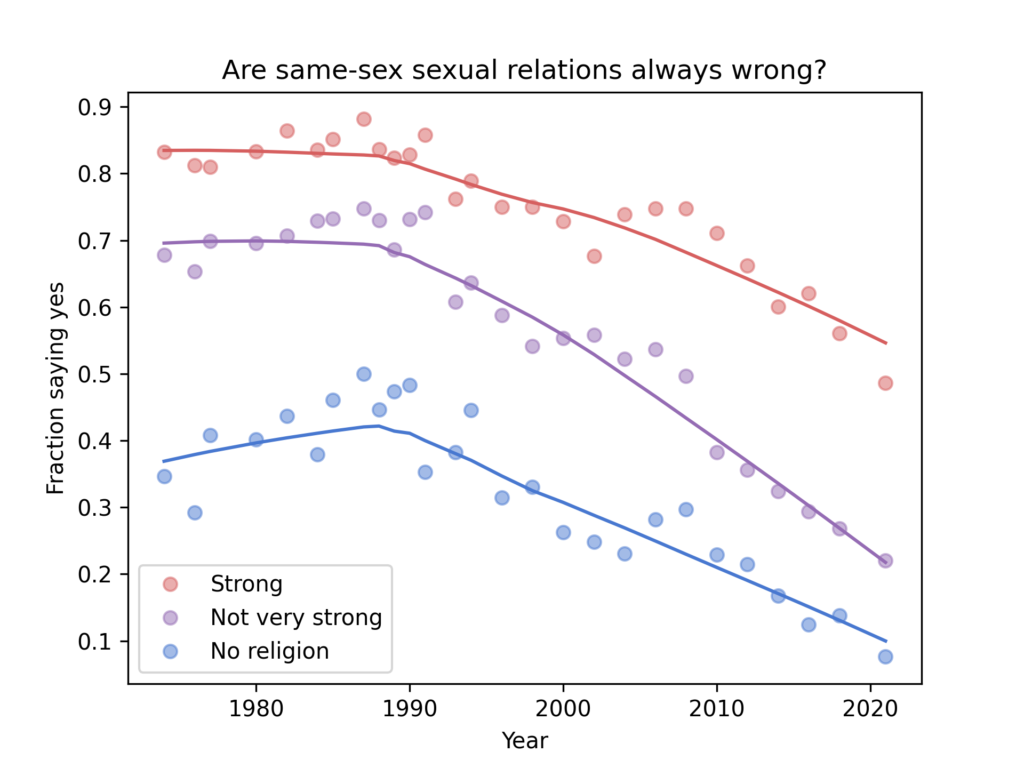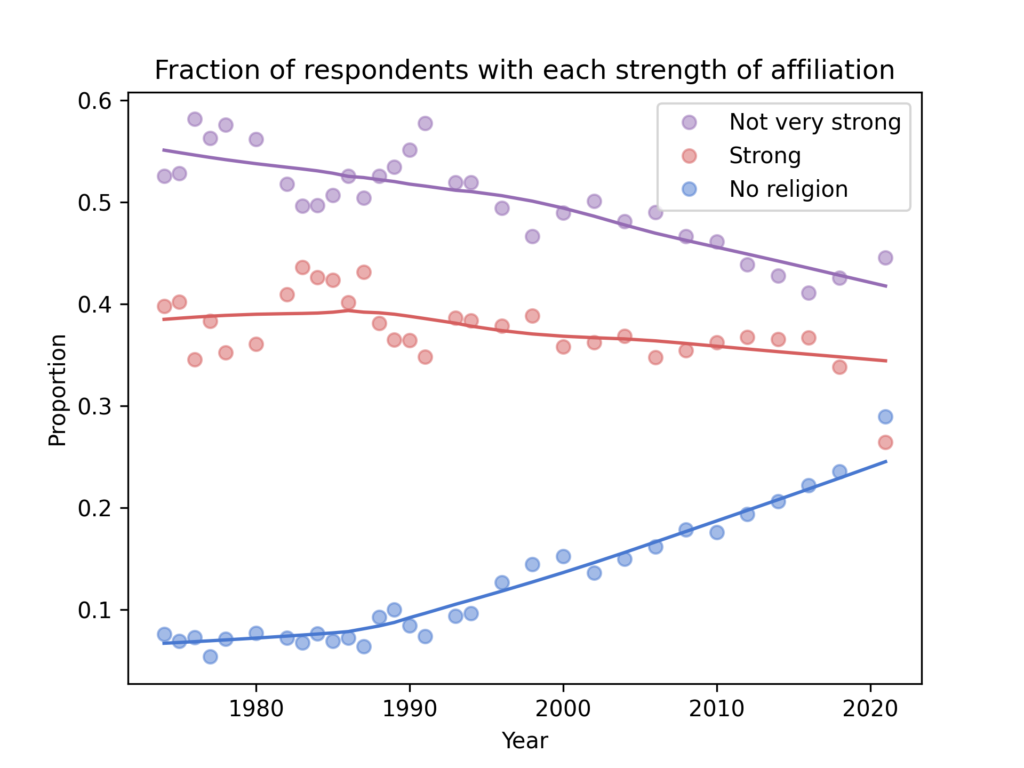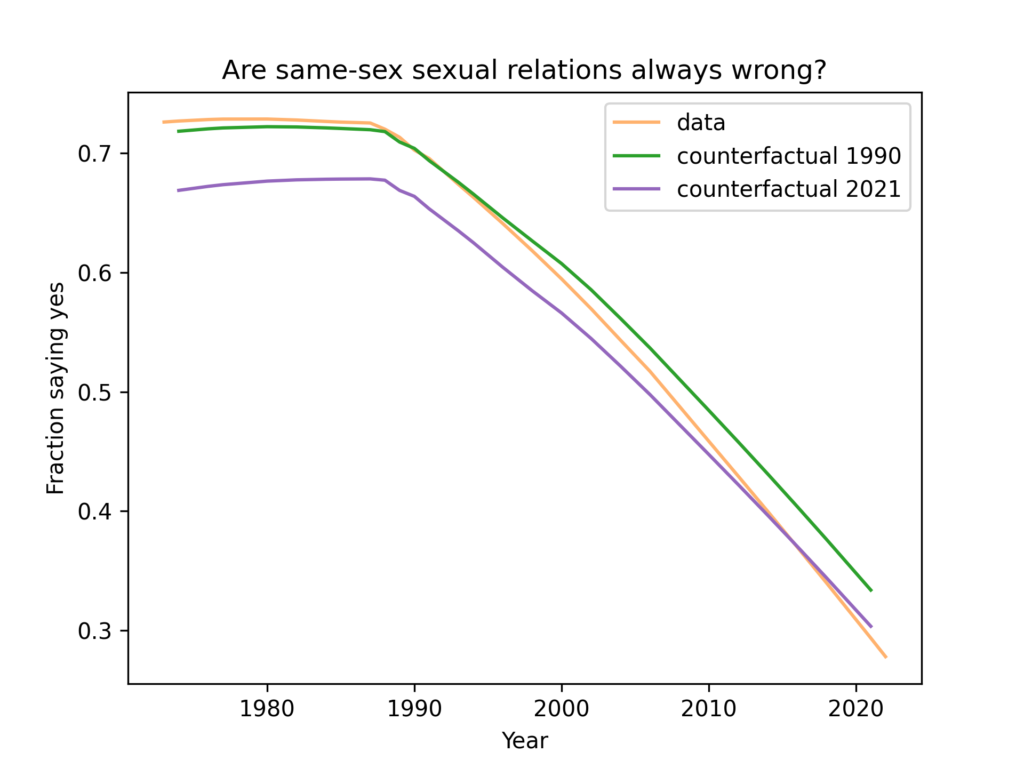Homophobia and Religion
Two weeks ago I published an excerpt from Probably Overthinking It where I presented data from the General Social Survey showing a steep decrease in the percentage of people in the U.S. who think homosexuality is wrong.
Last week I followed up to answer a question about data from Pew Research showing a possible reversal of that trend.
Now I want to answer a question posed (or at least implied) on Twitter, “I’d love to see all this, including other less-salient changes, through the lens of the decline of religion.” If religious people are more likely to disapprove of homosexuality, and if religious affiliation is declining, how much of the decrease in homophobia is due to the decrease in religion?
To answer that question, I’ll use the most recent GSS data, released in May 2023. Here’s the long-term trend again:

The most recent point is a small uptick, but it follows an unusually large drop and returns to the long-term trend.
Here are the same results divided by strength of religious affiliation.

As expected, people who say they are strongly religious are more likely to disapprove of homosexuality, but levels of disapprobation have declined in all three groups.
Now here are the fractions of people in each group:

The fraction of people with no religious affiliation has increased substantially. The fraction with “not very strong” affiliation has dropped sharply. The fraction with strong affiliation has dropped more modestly. The most recent data points are out of line with the long-term trends in all three groups. Discrepancies like this are common in the 2021 data, due in part to the pandemic and in part to changes in the way the survey was administered. So we should not take them too seriously.
Now, to see how much of the decline in homophobia is due to the decline of religion, we can compute two counterfactual models:
- What if the fraction of people in each group was frozen in 1990 and carried forward to the present?
- What if the fraction of people in each group was frozen in 2021 (using the long-term trend line) and carried back to the past?
The following figure shows the results:

The orange line shows the long-term trend (smoothed by LOWESS). The green line shows the first counterfactual, with the levels of religious affiliation unchanged since 1990. The purple line shows the second counterfactual, with affiliation from 2021carried back to the past.
The difference between the counterfactuals indicates the part of the decline of homophobia that is due to the decline of religion, and it turns out to be small. A large majority of the change since 1990 is due to changes within the groups — only a small part is due to shifts between the groups.
This result surprised me. But I have checked it carefully and I think I have an explanation.
- First, notice that the biggest shifts between the groups are (1) the decrease in “not so strong” and (2) the increase in “no religion”. The decrease in strong affiliation is relatively small.
- Second, notice that the decrease in homophobia is steepest among those with “not so strong” affiliation.
Taken together, these results indicate that there was a net shift away from the group with the fastest decline in disapprobation and toward a group with a somewhat slower decline. As a result, the decrease in religious affiliation makes only a modest contribution to the decrease in homophobia. Most of the change, as I argued previously, is due to changed minds and generational replacement.